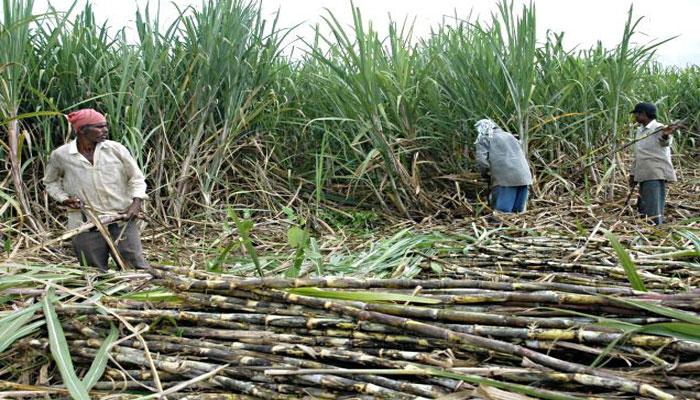Jai Jawan, Jai Kisan
June 7, 2018 | Expert Insights

The Indian government has approved new measures to help check the rapidly expanding sugar surplus on Tuesday.
The move comes as a result of BJP’s defeat in Kairana, a key Assembly seat in the sugarcane-belt of Western Uttar Pradesh.
Background
India’s modern history of agricultural movements began in the 1970s. Commonly called the “new farmers movements,” these movements involved widespread protests and the formation of farmers’ organizations. The aim of these protests was to modify the state’s intervention in the agrarian economy. Demands included lowering costs for inputs (such as seeds, fertilizers, water, and electricity), and higher selling prices.
In 1965, India’s second Prime Minister Lal Bahadur Shastri was sworn in to office when the country faced war with Pakistan and an acute scarcity of food grains. He gave the slogan “Jai Jawan, Jai Kisan”- meaning ‘hail the soldier, hail the farmer’- to boost morale of both soldiers and farmers caught in precarious positions.
A number of farmers in India are burdened with debt and high crop uncertainty. According to the All India Kisan Sabha (AIKS), 400,000 farmers have committed suicide since 1995. Crop failure, soil infertility, drought, increasing costs of production, and familial concerns are other factors linked to agrarian distress.
The Swaminathan Commission Report was a product of the National Commission on Farmers (NCF), intended to address farmer suicides in India. The report concluded that the major causes of the agrarian crisis in India are: poor land reforms, lack of agricultural infrastructure and technology, access to water, “access, adequacy and timeliness” of credit, weather conditions, and the marketability of agrarian goods. The report made a number of recommendations towards food security, agricultural productivity, and ecological sustainability.
The All India Kisan Sabha (AIKS) has launched a series of national and regional protests against low-buying prices of various commodities like milk and vegetables. AIKS is the farmer’s division of the CPI(M).
Read more about their recent success in Maharashtra here.
Sugar industry of UP
India is the world’s second largest producer of sugar and Uttar Pradesh is the largest producer and cultivator of sugar within the country. Farmers have successfully experimented with higher-yield varieties in recent years which, coupled with progress in techniques, has resulted in record output this year.
Sugar mills in UP are likely to end up crushing over 1,100 lakh tons (LT) of cane this season, but they already owe ₹ 12,500 crore cane dues to farmers.
Analysis
Sugar mills are unable to repay farmers due to low prices. The Indian Sugar Mills Association (ISMA) recently said that the average wholesale prices of sugar stood at ₹ 3,000 per quintal – ₹500 below the cost of production. Sugar prices remain low due to the excess production.
The Indian government approved ₹7,000 crore package for the beleaguered sugar industry to help pay dues of ₹22,000 crore to farmers. They have also fixed minimum price of sugar to ₹29/kg. However, ISMA believes this will not have a significant impact retail prices. The Cabinet also approved interest grants of Rs. 1,332 crore for five years on loans of Rs. 4,400 crore to expand ethanol capacity. Use of ethanol extracted from sugarcane can be used as a blending fuel. Thus, another sector might absorb the overwhelming supply.
The recent package comes as a result of the loss of Assembly seats across the state in the recent by-poll. The BJP government in the state was voted to power on ambitious promises of paying farmers within 14 days. However, months passed before the first set of farmers received their payments.
Mill dues are mounting in the state of Maharashtra, another BJP stronghold, which recorded the largest number of farmer suicides in the country. Bailout packages seldom reach farmers owing to restrictions and the classification of small and medium sized farmers. The worrisome situation of tenant farmers has not been adequately addressed.
“Dues have gone on mounting. In the coming days, they will touch Rs. 11,000 crore and by the end of the season, could increase much more,” said Pushpendra Singh, president of the Kisan Shakti Sangh.
Rashtriya Kisan Mahasangh’s 10-day protests, which involved vegetables and milk being thrown on the road, failed to affect markets. Demand for support prices has not been addressed by the Union government as prices remained steady. The implementation of Swaminathan Commission proposals alongside an overhaul of Union Farming and Agricultural Policy is of importance.
Farmers in India are facing a dual problem. On the one hand, bumper crops lead to low prices, but on the other hand low harvests increase burden of debt payments. Decades of poor farming practices and overuse of chemical fertilizers have ruined soil fertility and output. Employment in non-agricultural rural sectors has not improved, resulting in very low marginal utility of the agricultural community. The backbone of every economy - farmers - ought to be made India’s priority now.
Assessment
Our assessment is that the ruling government will be forced to address the farmer crisis in the days running up to the 2019 elections. As stated previously, we believe that the Indian agricultural sector faces a crisis of sustainability and productivity. The restructuring of current policies is imperative for progress on this front.








Comments